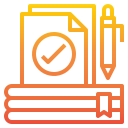Navigating the Digital Economy: Key Skills to Master
Build a Digital-First Mindset
Tools change, systems endure. Map how information moves, who needs it, and why it matters. When you understand the flow, you can swap platforms without panic. Tell us which workflows you’ve simplified recently and what surprised you most.


Build a Digital-First Mindset
Adopt a test-and-learn rhythm. Pilot a feature with ten users, run a two-week trial, or prototype a process with a single team. Low-risk experiments reduce fear, reveal insights, and build momentum. What experiment could you start this week?
Data Literacy for Everyday Decisions
01
Ask: What is this number? How was it measured? What context is missing? Pair quantitative trends with qualitative feedback. A single line chart never tells the whole story; annotations and narratives bring meaning alive and guide better decisions.
02
Frame a clear hypothesis, define success upfront, and change one variable at a time. Even lightweight tests—subject lines, call-to-action wording, or timing—can uncover surprising wins. Document learnings so your team compounds knowledge rather than repeating mistakes.
03
A team noticed rising clicks but flat sales. One spreadsheet revealed mobile checkout friction. A tiny form change lifted conversions twelve percent in a week. The lesson: the right data, framed well, creates leverage out of thin air.

Cybersecurity Habits That Stick
Use a reputable password manager, enable multifactor authentication, and retire reused passwords for good. This single change reduces risk dramatically and saves time. Set a calendar reminder to audit accounts quarterly; future you will be grateful.

Design for Asynchronous First
Write clear briefs, timestamp decisions, and keep conversations in shared spaces, not buried in DMs. Async-first work reduces timezone stress and boosts deep focus. Invite teammates to respond within windows, not seconds, to create humane rhythms.

Meetings With Purpose, Notes With Context
Every meeting needs an agenda, owner, and decision criteria. End with action items and responsible names. Publish concise notes where everyone can find them later. Good notes are team memory; great notes accelerate onboarding and reduce repeat debates.
No-Code Automation and Workflow Design
Sketch the workflow on paper: triggers, steps, owners, exceptions. Fix bottlenecks first, then automate. Clear maps prevent automating chaos and make maintenance easier. Start tiny, celebrate quick wins, and document so others can reuse your blueprint.
Personal Branding and Portfolio Signals
Tell a Cohesive Career Story
Write a one-paragraph narrative that connects your past roles to where you’re headed. Highlight problems you love solving and the outcomes you deliver. Clarity attracts aligned opportunities and helps recruiters remember you for the right reasons.


Make Your Profiles Do the Heavy Lifting
Refresh LinkedIn summaries, pin case studies, and keep GitHub or Behance current. Use clear titles, outcomes, and context. Show process, not just results. Thoughtful keywords help opportunities find you while you sleep, scroll, or sip coffee.
